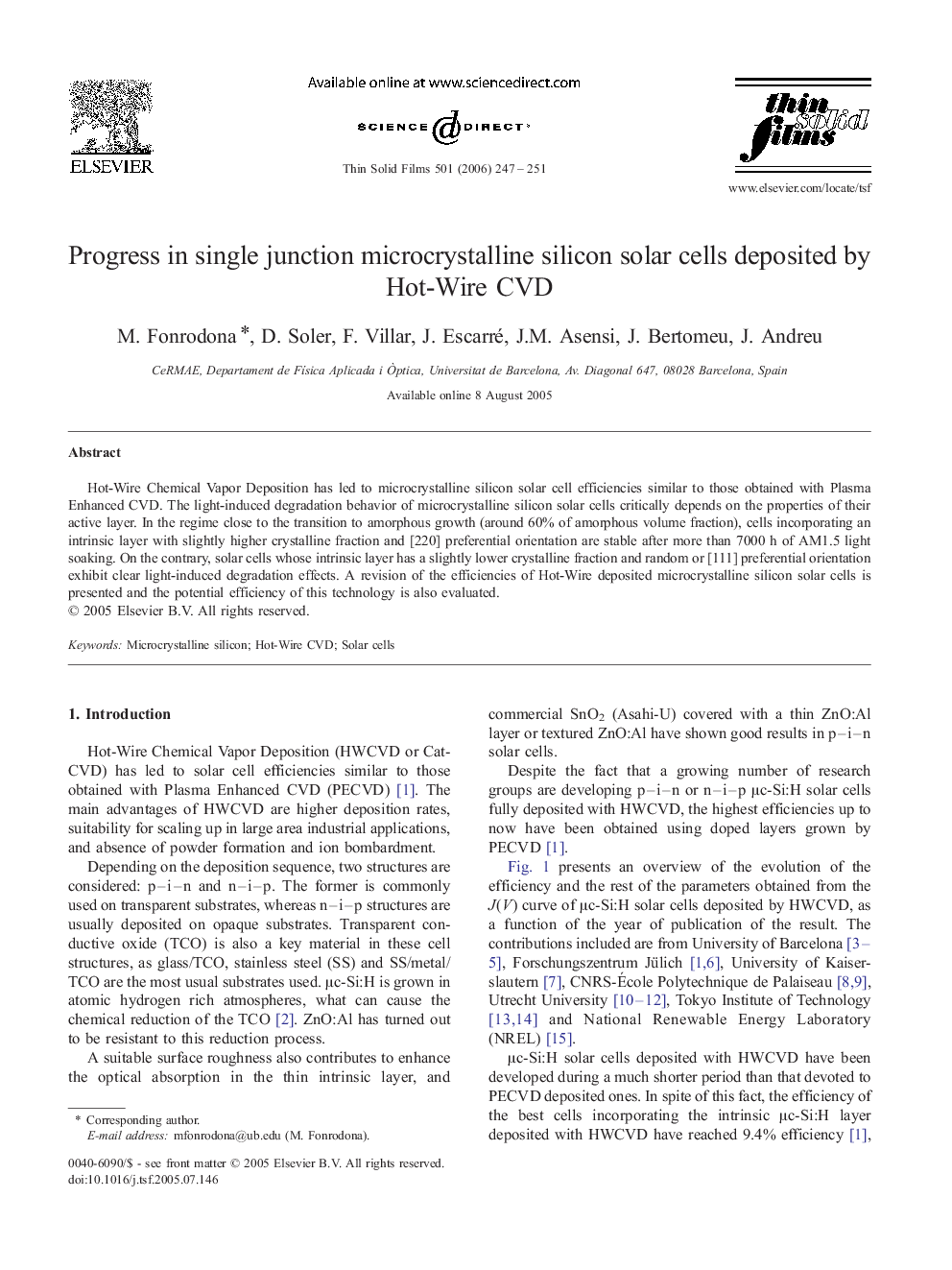| Article ID | Journal | Published Year | Pages | File Type |
|---|---|---|---|---|
| 1676204 | Thin Solid Films | 2006 | 5 Pages |
Hot-Wire Chemical Vapor Deposition has led to microcrystalline silicon solar cell efficiencies similar to those obtained with Plasma Enhanced CVD. The light-induced degradation behavior of microcrystalline silicon solar cells critically depends on the properties of their active layer. In the regime close to the transition to amorphous growth (around 60% of amorphous volume fraction), cells incorporating an intrinsic layer with slightly higher crystalline fraction and [220] preferential orientation are stable after more than 7000 h of AM1.5 light soaking. On the contrary, solar cells whose intrinsic layer has a slightly lower crystalline fraction and random or [111] preferential orientation exhibit clear light-induced degradation effects. A revision of the efficiencies of Hot-Wire deposited microcrystalline silicon solar cells is presented and the potential efficiency of this technology is also evaluated.
